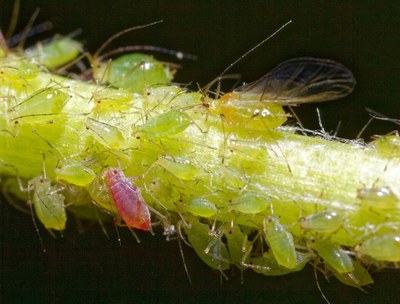The Agricultural Landscape and Arthropod Biodiversity Nexus (ALAN)

Agricultural landscape heterogeneity can be broadly defined as the mixture (composition) and spatial arrangement (configuration) of crop fields, natural grasslands, forests, and other habitat types which surround an agricultural field. Managing agricultural heterogeneity is likely to represent an important means of promoting sustainable agriculture. Increasing the heterogeneity of farmed landscapes can increase biodiversity within the area, including an increase in beneficial arthropods that carry out agroecosystem services. This increase in arthropod diversity can facilitate the suppression of herbivorous insects through the increased abundance and activity of natural predators and parasitoids. However, the extent to which agricultural heterogeneity impacts the between- and within-species diversity of herbivorous insects is unknown. Species diversity is important from an agricultural perspective as some species are more virulent and represent a greater agricultural threat than others. Furthermore, the diversity within species, including genetic diversity and association with endosymbionts, can influence the biology and ecology of herbivorous insects. This can have wide ranging agricultural consequences such as conferring resistance against natural enemies and promoting pest proliferation. The research in this project will examine the extent to which agricultural heterogeneity influences the intra-species diversity in herbivorous insect species of agricultural importance.
Led by: Dr. Daniel Leybourne
Team: Prof. Dr. Emily Poppenborg Martin
Year: 2020
Funding: Alexander von Humboldt Foundation
Duration: 01.01.2021 – 31.12.2022
